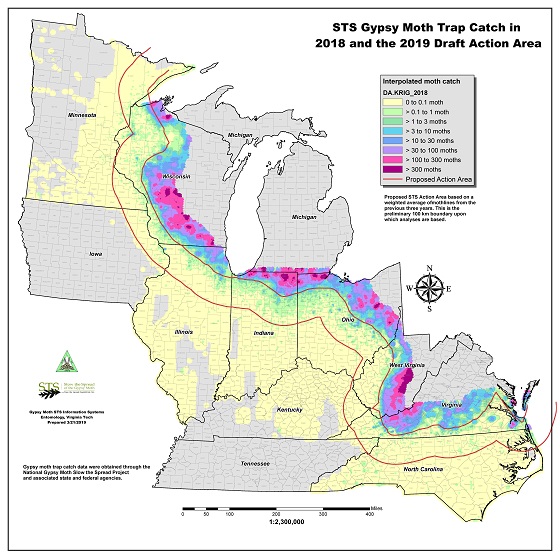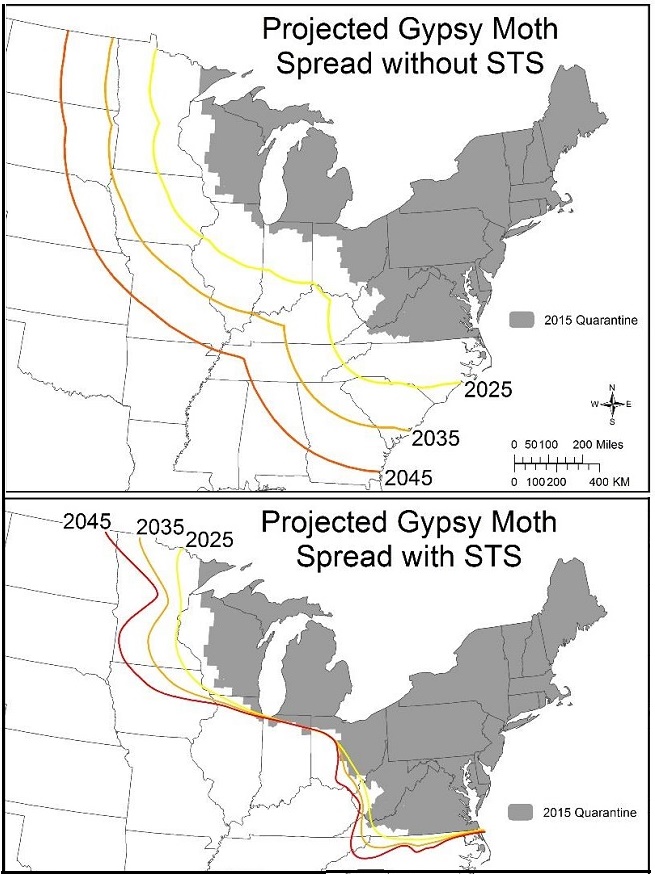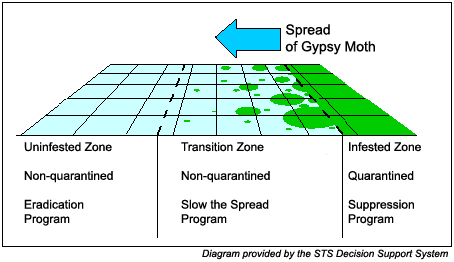The National Slow The Spread Program
Gypsy Moth Management

Since the U.S. Congress has funded the National Slow The Spread Program (STS) in the year 2000, eleven states located along the leading edge of the main gypsy moth population have implemented a region-wide strategy with the USDA Forest Service to minimize the rate at which gypsy moth spreads into uninfested areas.
The National Slow The Spread Program uses education, detection, and control strategies to slow the spread of the pest across a 1,200 mile long gypsy moth frontier from Minnesota to North Carolina.
Northeast Iowa and southeast Minnesota are now considered to be in the 100 mile wide "transition zone" between generally infested gypsy moth areas and unifested areas. Gypsy moth is moving forward by natural spread into new areas in this zone.



